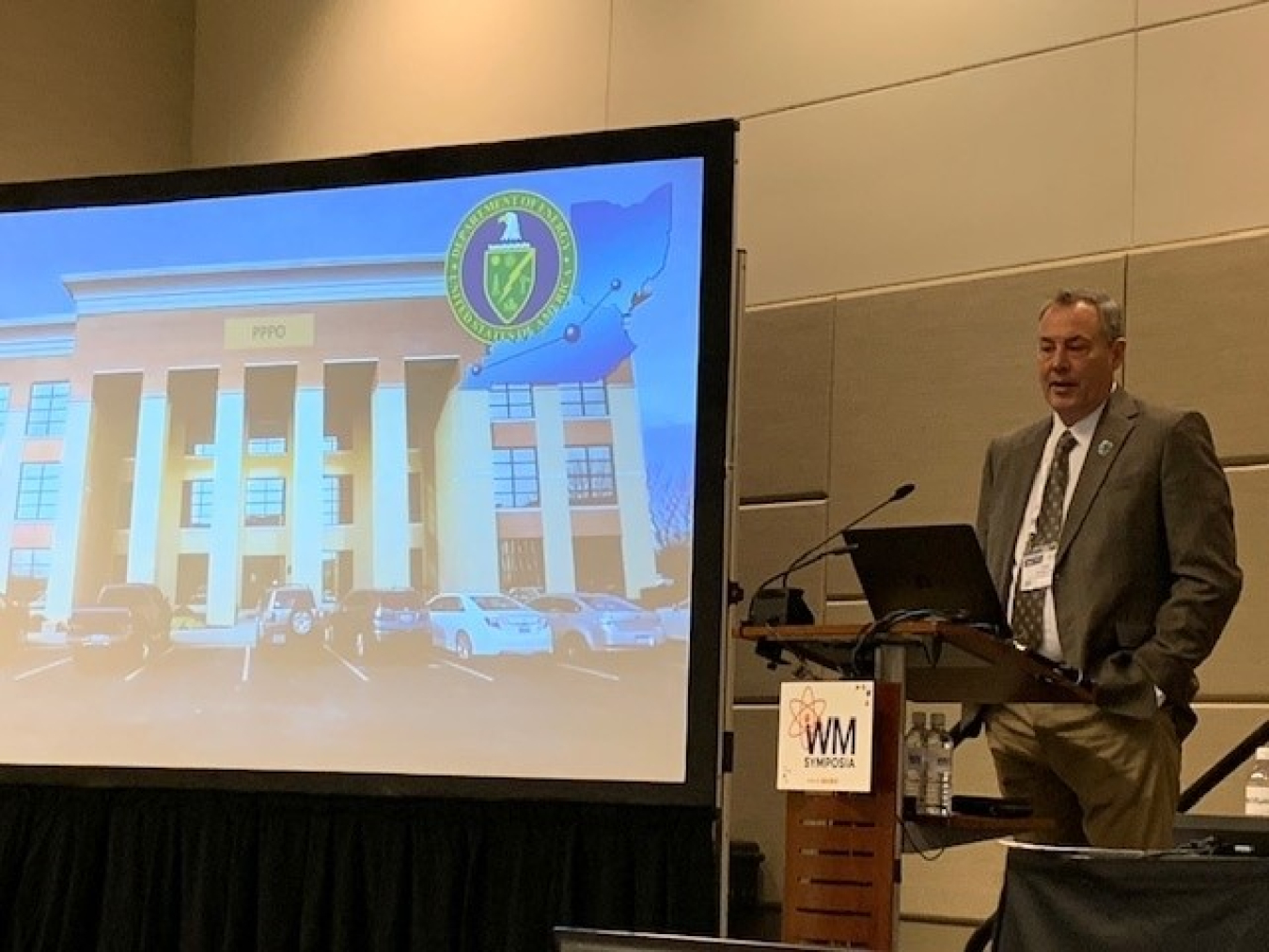Managers of the EM sites at Portsmouth, Ohio and Paducah, Kentucky, provided an update at the 2022 Waste Management Symposia last week on cleanup progress at the two locations.
Office of Environmental Management
March 15, 2022
PHOENIX – Managers of the EM sites at Portsmouth, Ohio and Paducah, Kentucky, provided an update at the 2022 Waste Management Symposia last week on cleanup progress at the two locations, as well as on conversion of depleted uranium hexafluoride (DUF6), a byproduct of uranium processing at both plants.
Joel Bradburne, manager of the Portsmouth/Paducah Project Office (PPPO), said the uranium enrichment decontamination and decommissioning (UED&D) strategy mandated through the 1992 Energy Policy Act remains intact and is succeeding.
“It was 30 years ago that the UED&D strategy was created for the cleanup of the federal government’s gaseous diffusion plants (GDP) at Oak Ridge, Portsmouth and Paducah,” remarked Bradburne. “Things have certainly evolved, but the department’s strategy has survived and is continuing to guide D&D success at PPPO.”
The strategy generally sequenced the cleanup at Oak Ridge, Tennessee, then Portsmouth and Paducah.
EM and contractor site leads presented updates on PPPO projects during the panel session. For Portsmouth, the site is set to complete demolition of the X-326 process building this year, which is an EM priority for 2022; and continue efforts to synchronize waste placement and excavated fill as the site continues to prepare the X-333 and X-330 process buildings for future demolition.
At Paducah, a C-400 Cleaning Building remedial investigation/feasibility study report will go to regulators this year, the first step in a Comprehensive Environmental Response, Compensation, and Liability Act (CERCLA) decision that will rid the site of the primary source of trichloroethylene (TCE) at the site.
Paducah is set to remove an additional 1 million pounds of R-114, a hazardous refrigerant used in the former uranium enrichment process, another EM priority for this year.
DOE also will fully restart the DUF6 conversion plants this year after a COVID-19 shutdown opened up an opportunity for safety and modernization actions.
To receive the latest news and updates about the Office of Environmental Management, submit your e-mail address.

